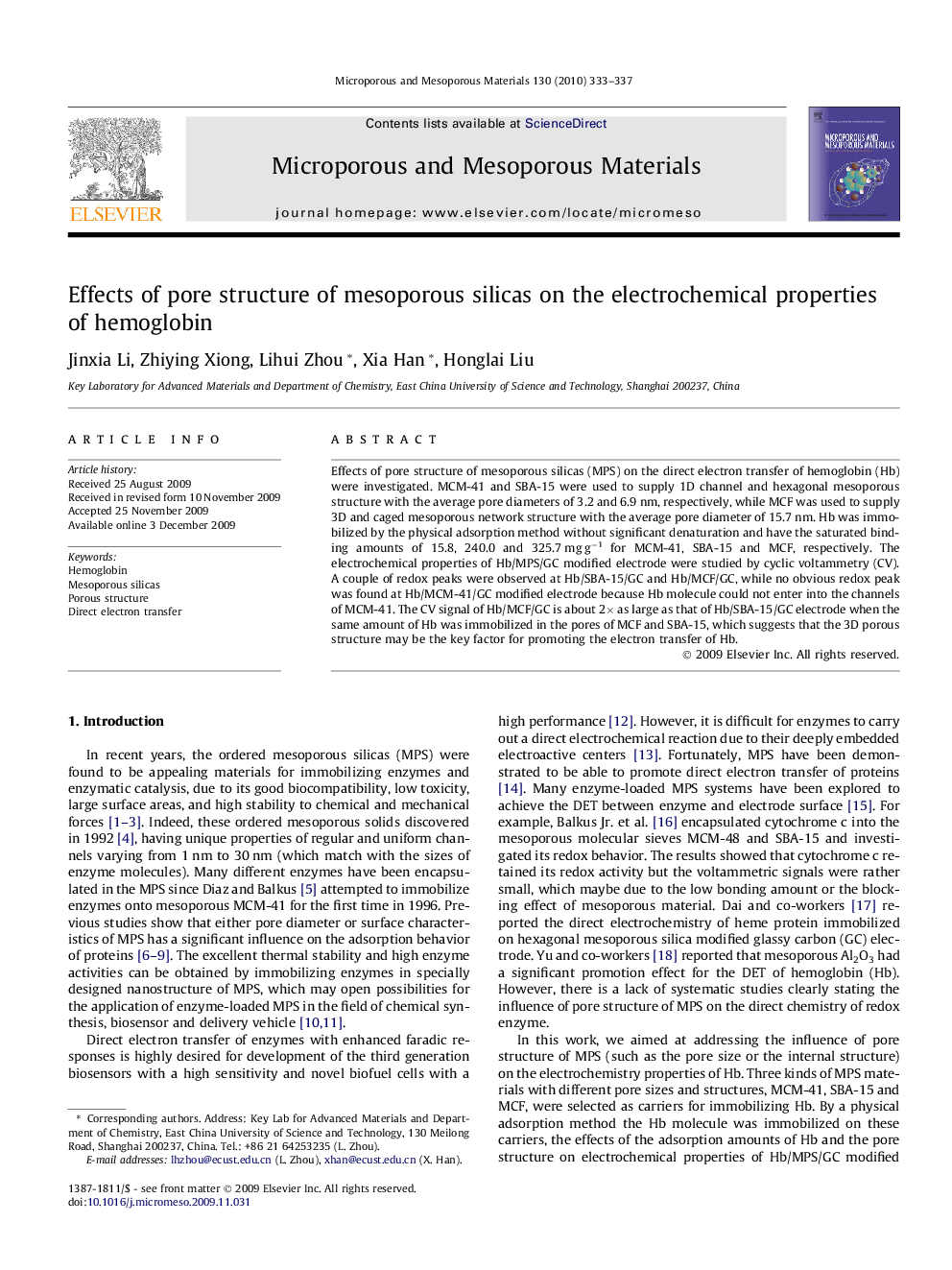| Article ID | Journal | Published Year | Pages | File Type |
|---|---|---|---|---|
| 75495 | Microporous and Mesoporous Materials | 2010 | 5 Pages |
Effects of pore structure of mesoporous silicas (MPS) on the direct electron transfer of hemoglobin (Hb) were investigated. MCM-41 and SBA-15 were used to supply 1D channel and hexagonal mesoporous structure with the average pore diameters of 3.2 and 6.9 nm, respectively, while MCF was used to supply 3D and caged mesoporous network structure with the average pore diameter of 15.7 nm. Hb was immobilized by the physical adsorption method without significant denaturation and have the saturated binding amounts of 15.8, 240.0 and 325.7 mg g−1 for MCM-41, SBA-15 and MCF, respectively. The electrochemical properties of Hb/MPS/GC modified electrode were studied by cyclic voltammetry (CV). A couple of redox peaks were observed at Hb/SBA-15/GC and Hb/MCF/GC, while no obvious redox peak was found at Hb/MCM-41/GC modified electrode because Hb molecule could not enter into the channels of MCM-41. The CV signal of Hb/MCF/GC is about 2× as large as that of Hb/SBA-15/GC electrode when the same amount of Hb was immobilized in the pores of MCF and SBA-15, which suggests that the 3D porous structure may be the key factor for promoting the electron transfer of Hb.
